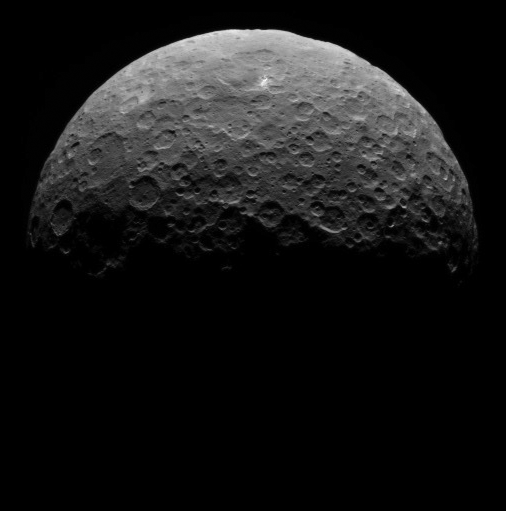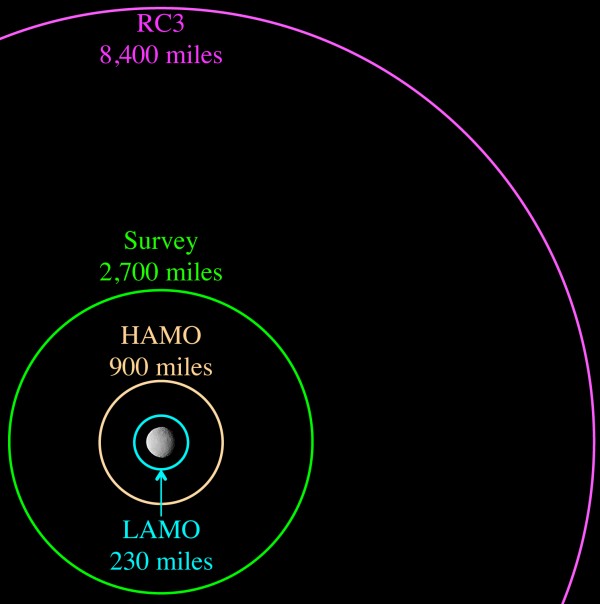
The dwarf planet Ceres has several bright spots, but the two brightest and most mysterious-looking ones, which have fascinated scientists for months, are now back in view in the newest images from NASA’s Dawn spacecraft, released on April 20, 2015. Dawn took the images to create this animation on April 14 and 15 from a vantage point 14,000 miles (22,000 kilometers) above Ceres’ north pole.
Image scale here is about 1.3 miles (2.1 kilometers) per pixel, compared to 1.9 miles (3.1 kilometers) per pixel in the optical navigation images taken on April 10.
The sun-Ceres-spacecraft angle, or phase angle is 91 degrees here, compared to 131 degrees in the previous sequence.
And the spots still look … strange! The images show the spots clearly standing out against their darker surroundings. Their composition and sources are still unknown. One idea is that they are icy plumes – or some other kind of active geological feature – from Ceres’ surface. That would be amazing! And we’ll soon know, as Dawn draws into closer and closer orbits around Ceres.
The spacecraft acquired these recent images while settling into its first circular orbit, called RC3 (for “rotation characterization 3”), which it will begin on April 23.
Enjoying EarthSky so far? Sign up for our free daily newsletter today!

On March 6, Dawn became the first spacecraft to orbit a dwarf planet, and the first to orbit two extraterrestrial targets. Scientists will be comparing Ceres to giant asteroid Vesta, which Dawn studied from 2011 to 2012, in order to gain insights about the formation of our solar system.
Both Vesta and Ceres, located in the main asteroid belt between Mars and Jupiter, are thought to have been on their way to becoming planets before their development was interrupted.
Bottom line: Many have asked about the strange-looking bright spots on Ceres, and it has taken the Dawn spacecraft over a month to reacquire an image of them. From here on out, we should begin to learn what the spots are! One suggestion has been that they are icy plumes or other geological feature.











